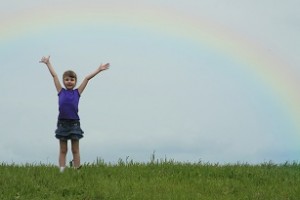
According to Ruth Churchill Dower, who works alongside professionals working with young children in the United Kingdom, “we can only nurture young children’s creative potential by developing our own.”
What is the relationship between creativity and play? In my experience, play is a component of creativity in that when we play, really play, we relax our habitual way of relating to the world and become open to the possibility of creative insight. A sense of play during the process of manifesting, such as maintaining a good sense of humor, helps us remain open and resilient when we come across obstacles and challenges.
Check out Ruth Churchill Dowers and the Earlyarts Foundation’s insights on the relationship between creativity and play, especially in relation to children and professionals working with children:
At Earlyarts, we believe both concepts are fundamental to a positive, developmental environment in which a young child’s amazing potential can be observed and nurtured. But creativity seems to sit higher in the unspoken hierarchy, while playfulness is something we don’t seem to have much time to do, either as parents or professionals.
So we’ve been wondering what would it take to change this situation? As the national network for early years, arts and cultural professionals, how can we achieve a balance where both sectors have the skills, confidence, attitude and aptitude to be as creative and playful as their children need them to be, with a strong thirst for quality and without fear of judgement?
The single biggest reason why people join Earlyarts is because they want to become more creative in their work and make a bigger difference in their settings, whether cultural or educational. When we dig deeper, we find this means different things to different people – from confidence to connections, and from new skills to new inspiration. The common link is that everyone wants to enable their children’s potential.
Click here to see “Creativity or play? Why early arts professionals should not have to choose”.